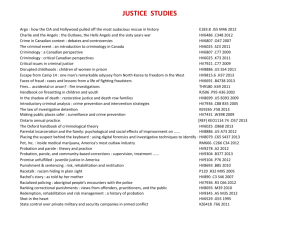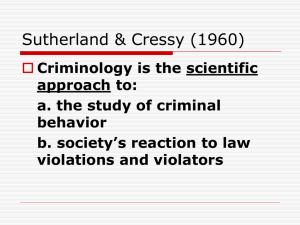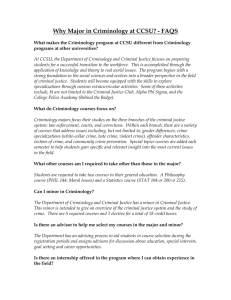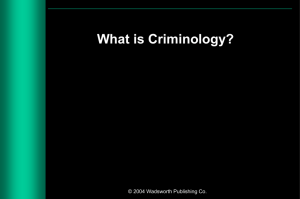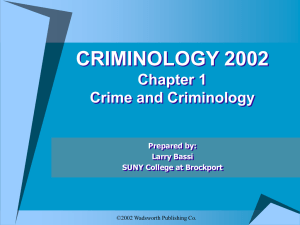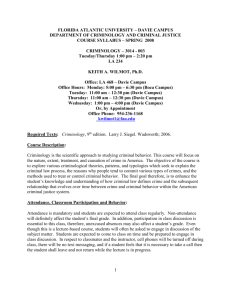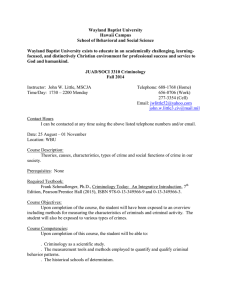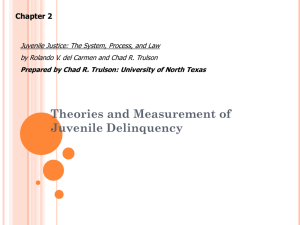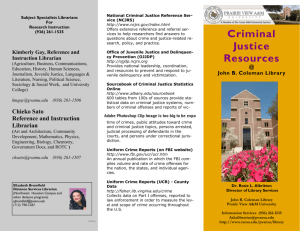Crime, Law, and Justice
advertisement
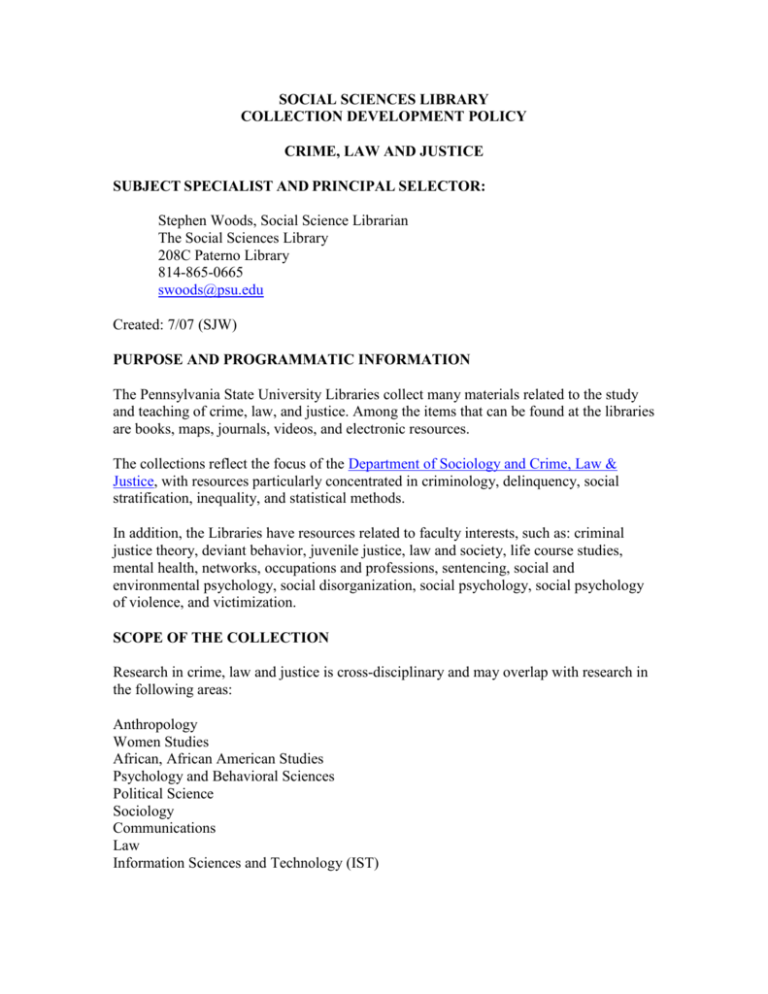
SOCIAL SCIENCES LIBRARY COLLECTION DEVELOPMENT POLICY CRIME, LAW AND JUSTICE SUBJECT SPECIALIST AND PRINCIPAL SELECTOR: Stephen Woods, Social Science Librarian The Social Sciences Library 208C Paterno Library 814-865-0665 swoods@psu.edu Created: 7/07 (SJW) PURPOSE AND PROGRAMMATIC INFORMATION The Pennsylvania State University Libraries collect many materials related to the study and teaching of crime, law, and justice. Among the items that can be found at the libraries are books, maps, journals, videos, and electronic resources. The collections reflect the focus of the Department of Sociology and Crime, Law & Justice, with resources particularly concentrated in criminology, delinquency, social stratification, inequality, and statistical methods. In addition, the Libraries have resources related to faculty interests, such as: criminal justice theory, deviant behavior, juvenile justice, law and society, life course studies, mental health, networks, occupations and professions, sentencing, social and environmental psychology, social disorganization, social psychology, social psychology of violence, and victimization. SCOPE OF THE COLLECTION Research in crime, law and justice is cross-disciplinary and may overlap with research in the following areas: Anthropology Women Studies African, African American Studies Psychology and Behavioral Sciences Political Science Sociology Communications Law Information Sciences and Technology (IST) I. Materials collected A. Languages Collected. Emphasis is placed on English language materials, with a small proportion of titles purchased in German and French. B. Geographical Limits. No region or country is excluded, growing focus on international aspects of communications. A growing interest in international and foreign, particularly African sources. C. Chronological Limits. The collection is developed across all time periods. An emphasis is placed on current research. D. Major Publishers Lawrence Erlbaum Taylor and Francis Sage University Presses Association publications (i.e., The American Society of Criminology, Academy of Criminal Justice Sciences, European Society of Criminology, The National Council on Crime and Delinquency, The Institute for Criminal Justice Ethics, National Association for Youth Justice) E. Reference Works. Collect encyclopedias and dictionaries; directories; handbooks and biographical works. Periodicals. Include scholarly journals and serials published by professional organizations. Journals are subscribed to in print and/or electronically. Databases providing e-journals of relevance to Sociology include and not limited to: Criminal Justice Abstracts, Sociological Abstracts, PsychINFO, and Social Science Citation Index. G. Government and International Organization Publications. U.S. government publications are of some importance to this fund. Publication from the Bureau of Justice, FBI, and INTERPOL are significant interest. H. Video/DVD collections. Some videos and DVD are selected, but only those that are frequently used/shown in the classroom. I. Generally Excluded Textbooks (some exceptions for core textbooks in the field that are used in introductory and survey courses) Reprints of articles or other materials, especially if contained in journals owned Popular works Less emphasis on practitioner sources Dissertations Juvenile materials J. Areas of focus/strength: Resources that concentrate in the areas of criminology, delinquency, social stratification, inequality, and statistical methods. II. Electronic Resources Criminal Justice Abstracts National Criminal Justice Reference Service (NCJRS) Sociological Abstracts Social Science Citation Index PsychINFO Annual Reviews ICPSR COORDINATING AND COOPERATIVE EFFORTS I. Related Funds: SOCREF SOCIO BEHSCI BUSGRP SOCSCGRP—AV and Mono DOCS POLSC DATA MAPS II. Campus Locations. Because other campuses and the World Campus offer majors, classes and certificates in crime, law and justice, some duplication of key resources will be necessary to serve the large number of majors. III. Data/Statistical Collections. Research in crime, law and justice at Penn State relies on the use of demographic and secondary numeric data. There is also an increasing number of emerging researchers at Penn State using geospatial data.

